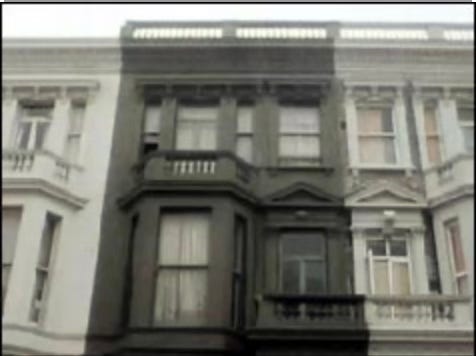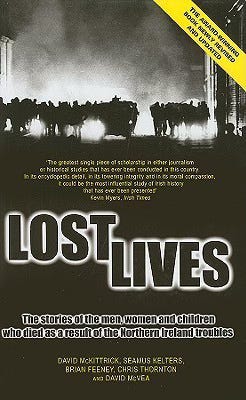February 1975 saw Margaret Thatcher beat Edward Heath for leadership of the British Conservative Party. A changing of the guard at the top end of British politics would see the “Iron Lady” not make many friends in Northern Ireland amongst the Nationalist communities, particularly with quotes like "Crime is crime is crime; it is not political" concerning the hunger strikes. As we delve into the 1980s in the future, Thatcher becomes a key player.
Political Developments in February 1975
The month began with a bizarre impromptu meeting at Stormont Castle. On Monday the 3rd of February, a delegation led by Mr West and Mr Paisley arrived uninvited and unannounced at the steps of Stormont Castle at around 4:00 pm and, after some negotiation with the Principal Private Secretary, handed in a written demand to see the Secretary of State. Reluctantly, the Secretary of State agreed to see them later in the evening.
During the meeting, Mr West stated their anxiety about how the Government is handling the current situation. Specifically, they highlighted four areas of concern that they wanted to discuss; the negotiations with the IRA, the SDLP’s attitude towards the RUC, the lack of police cooperation with the Army, and the withdrawal of firearms.
At the end of the meeting, Mr West said that the Secretary of State had failed to satisfy the delegation that there was a useful purpose in the continuation of talks with Sinn Féin and he called for an end to such meetings. He also urged the Secretary of State to use his influence on the SDLP to change their policy toward the RUC.
A few days later, on the 5th, The Northern Ireland Office published a discussion paper on power-sharing, ‘The Government of Northern Ireland: A Society Divided’. This was the third discussion paper published in advance of the Northern Ireland Constitutional Convention. Secretary of State for Northern Ireland Merlyn Rees announced that new blocks ('H-Blocks') were to be built at the Maze Prison while waiting for a new prison at Maghaberry, County Antrim, to be completed.
A major development in February came on the 9th when the IRA announced that it would be reinstating its ceasefire, effective from 6:00 pm on the 10th of February. The ceasefire went ahead as planned. It was to last, officially, until the 23rd of January 1976. However, there were several incidents during 1975 involving members of the IRA. During the period of the ceasefire, the British government and the Northern Ireland Office denied that a deal had been made with the IRA. Sinn Féin and the IRA said a 12-point plan had been agreed with the British. Some of the elements of this alleged deal were to become apparent such as the setting up of 'Incident Centres' and a reduction in security force activity in Nationalist areas.
The aforementioned ‘Incident Centres’ were established on the 12th of February in Nationalist areas across Northern Ireland to monitor the IRA ceasefire and the response of the security forces. The centres were manned by members of Sinn Féin who liaised with government officials at the Northern Ireland Office.
The 18th of February saw Airey Neave appointed as the Conservative Party's spokesman on Northern Ireland.
A feud began between the Official Irish Republican Army on one side and the Irish Republican Socialist Party and the Irish National Liberation Army on the other on the 20th of February. This led to violence, which we’ll cover as we work our way through this instalment.
From public records released in January 2001, a telegram was sent by British Foreign Secretary James Callaghan to the British Ambassador in Dublin. The telegram contains notes about matters related to Northern Ireland that Callaghan wanted the Ambassador to raise with Irish Prime Minister Liam Cosgrave. The telegram mentioned the proposal to establish seven 'Incident Centres' to deal with problems that arose during the IRA ceasefire.
"Discussion focused on the arrangements which would be needed to avoid the ceasefire being disrupted by isolated or spontaneously generated incidents which might lead to an uncontrolled escalation of violence. A proposal was evolved for the setting up of seven incident centres ... "
Another appointment was made in February when Lord Chief Justice of Northern Ireland Robert Lowry became the Chairman of the Constitutional Convention.
Shootings in February 1975
06/02/75 - Catholic civilian Colette Brown (31), was found shot dead by the side of Killyglen Road, Larne, County Antrim. She had been "sentenced to death" by a loyalist group for allegedly passing information to the IRA. Two men were convicted for her killing: one a UVF member and the other a UDR lance-corporal.
08/02/75 - The UVF shot dead Catholic civilian James Sullivan (30), at his home on Lesley Street, Ligoniel, Belfast. He was a former internee.
08/02/75 - British soldier William Robson (22) died two days after being shot by an IRA sniper while on foot patrol in the village of Mullan, County Fermanagh.
09/02/75 - The UDA opened fire on Catholic civilians leaving St Brigid's church on Derryvolgie Avenue, Belfast. two teenage parishioners, Kevin Ballentine (18) and Gerard Kiely (19), were killed.
10/02/75 - The UVF shot dead Catholic civilian Joseph Fitzpatrick (19), as he worked sweeping the street at Cooke Place, off Ormeau Road, Belfast.
10/02/75 - Catholic civilians Arthur Mulholland (65) and Eugene Doyle (18) were shot dead by Loyalist paramilitaries in a gun attack on Hayden's Bar, near Pomeroy, County Tyrone.
11/02/75 - Postman Christopher Mein (25), on relief duty, was killed on his milk round by the IRA in Galbally, Cappagh, County Tyrone. The regular milkman was suspected to be the intended target.
14/02/75 - The INLA shot and injured a utility worker in his car in Derry, having mistaken him for a member of British security forces.
14/02/75 - The UVF shot Catholic civilian Brendan Doherty (23) on the Portrush Road, Coleraine, County Londonderry. He died ten days later on the 24th of February.
19/02/75 - Civilian James Breen (45) was shot by a loyalist group at his home, North Circular Road, Lurgan.
20/02/75 - Chairman of the Whiterock IRSP Hugh Ferguson (19) was shot dead at his place of work in Ballymurphy, Belfast. It was believed that the OIRA were responsible for this killing as part of the ongoing feud.
25/02/75 - The INLA, using the cover name People's Liberation Army, shot dead OIRA Volunteer Paul Fox (25) in the Divis Flats area of Belfast. The murder was part of the INLA/OIRA feud.
25/02/75 - The UDA shot dead Catholic civilian David McConkey (40) at his workplace, Fisher Metal Fabrications, on Boucher Road, Belfast. He was singled out and made to kneel before being shot in the head. The gunmen stole a small sum of money.
26/02/75 - Off-duty police officer Stephen Tibble (22) was shot dead as he joined in the chase of IRA member Liam Quinn on his motorbike in Barons Court, London. Quinn had been spotted by a detective coming out of a house discovered to be an IRA bomb factory.
Quinn escaped to Dublin where he was later arrested for assaulting a police officer. One of the plain-clothed officers who encountered him in the London incident identified him, but extradition from the Republic of Ireland to the United Kingdom was refused by the Irish courts. After serving a prison sentence in Ireland for IRA membership, Quinn, a US citizen of Irish and Mexican descent, returned to San Francisco shortly after his release.
Quinn was arrested in California by the FBI in 1981 after the US government approved an extradition request from British authorities. He then instigated a seven-year battle against extradition to the UK. Quinn was extradited to England in 1988 and was tried and found guilty of murder. He was sentenced to life imprisonment in February 1988 with a recommended minimum sentence of thirty years. Quinn served eleven years in Portlaoise prison before he was released in April 1999, along with the rest of the Balcombe Street gang, under the terms of the Good Friday Agreement.
27/02/75 - Civilian Wesley Black (31) was shot during a gun attack on the home of a UDA member, West Circular Road, Belfast. he was walking past the house at the time.
28/02/75 - The UVF killed Catholic civilian Michael Convery (22), and wounded another, in a drive-by shooting on the Lower Antrim Road near Camberwell Terrace, Belfast.
28/02/75 - Civilian Thomas Truesdale (20) was shot by a republican group from a passing car while standing at the junction of Benview Park and Ballysillan Crescent, Belfast.
Bombings in February 1975
20/02/75 - The UVF exploded a bomb at the Railway Bar, Shore Road, Greencastle, Belfast, killing Catholic civilian Gerald McKeown (20).
Thanks very much for reading. I hope you found it interesting and will come back on Sunday!
I appreciate everyone who has hit that heart icon ❤️ at the bottom recently. It makes it easier for other people to find this newsletter.
Thanks for the support!
If you’d like to let me know what you thought of today’s instalment, feel free to leave a comment below.
Some recommended reading based on research for this instalment.






Hi Dan,tiny correction needed in your opening line - Margaret Thatcher beat Ted Heath. Wilson was Labour Prime Minister at the time.